

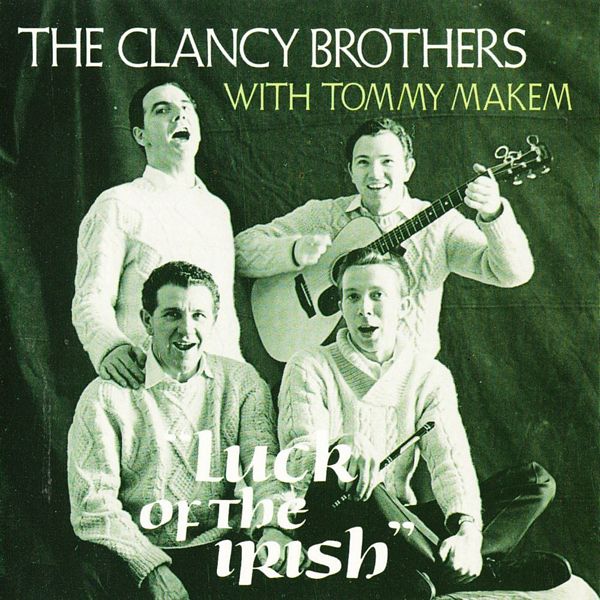 |
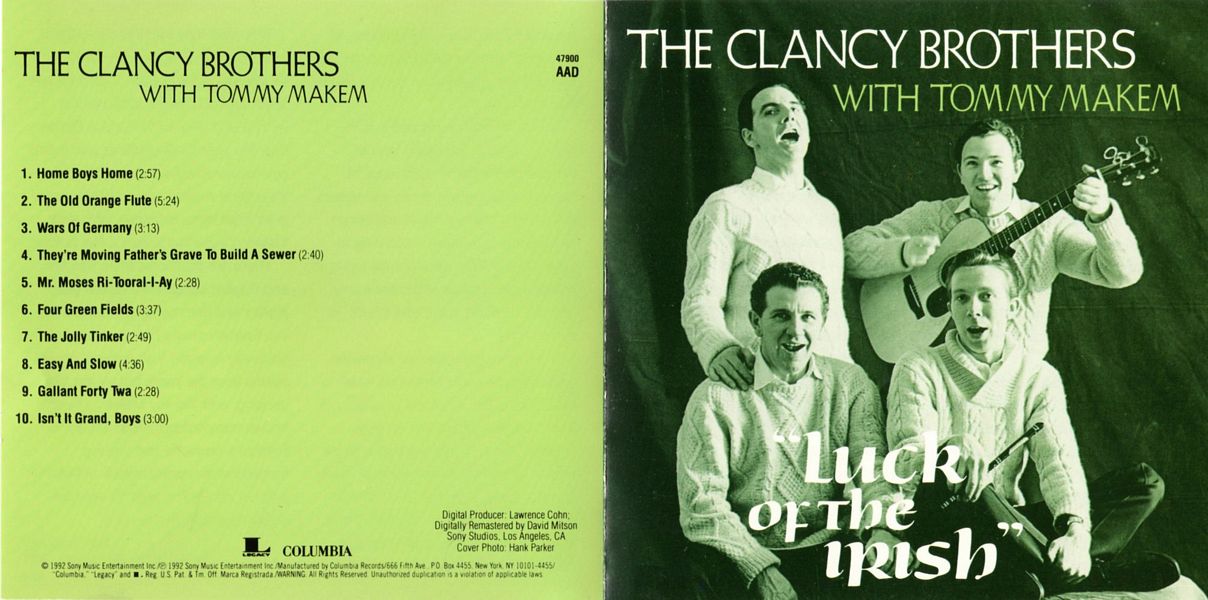
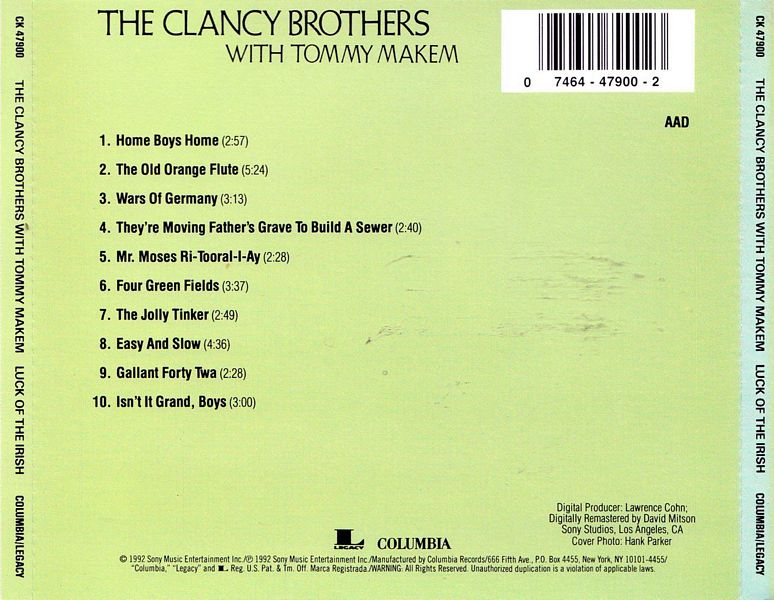 |
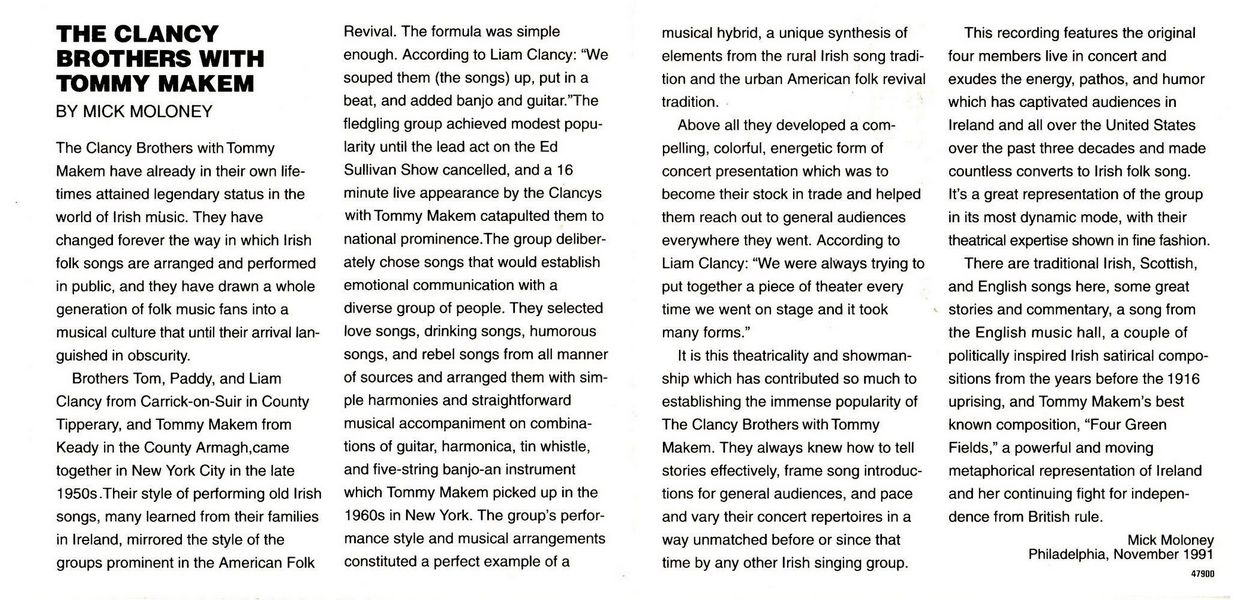
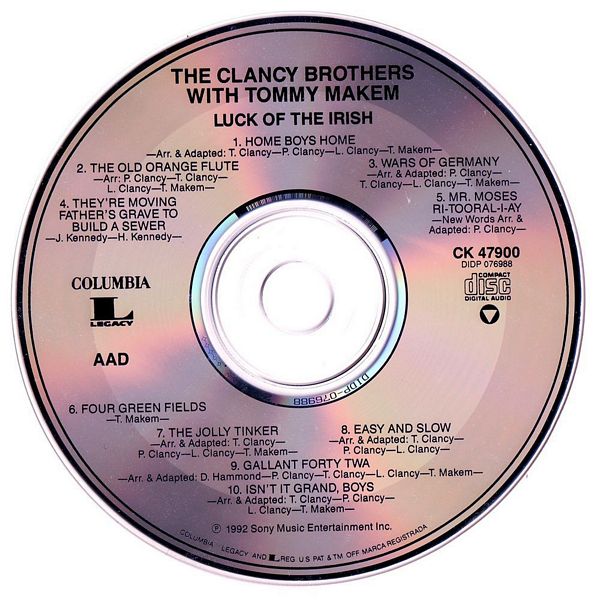 |
Sleeve Notes
THE CLANCY BROTHERS WITH TOMMY MAKEM
BY MICK MOLONEY
The Clancy Brothers with Tommy Makem have already in their own lifetimes attained legendary status in the world of Irish music. They have changed forever the way in which Irish folk songs are arranged and performed in public, and they have drawn a whole generation of folk music fans into a musical culture that until their arrival languished in obscurity.
Brothers Tom, Paddy, and Liam Clancy from Carrick-on-Suir in County Tipperary, and Tommy Makem from Keady in the County Armagh, came together in New York City in the late 1950s Their style of performing old Irish songs, many learned from their families in Ireland, mirrored the style of the groups prominent in the American Folk Revival. The formula was simple enough. According to Liam Clancy: "We souped them (the songs) up, put in a beat, and added banjo and guitar." The fledgling group achieved modest popularity until the lead act on the Ed Sullivan Show cancelled, and a 16 minute live appearance by the Clancys with Tommy Makem catapulted them to national prominence. The group deliberately chose songs that would establish emotional communication with a diverse group of people. They selected love songs, drinking songs, humorous songs, and rebel songs from all manner of sources and arranged them with simple harmonies and straightforward musical accompaniment on combinations of guitar, harmonica, tin whistle, and five-string banjo — an instrument which Tommy Makem picked up In the 1960s in New York. The group's performance style and musical arrangements constituted a perfect example of a musical hybrid, a unique synthesis of elements from the rural Irish song tradition and the urban American folk revival tradition.
Above all they developed a compelling, colorful, energetic form of concert presentation which was to become their stock in trade and helped them reach out to general audiences everywhere they went. According to Liam Clancy: "We were always trying to put together a piece of theater every time we went on stage and it took many forms."
It is this theatricality and showmanship which has contributed so much to establishing the immense popularity of The Clancy Brothers with Tommy Makem. They always knew how to tell stories effectively, frame song introductions for general audiences, and pace and vary their concert repertoires in a way unmatched before or since that time by any other Irish singing group.
This recording features the original four members live in concert and exudes the energy, pathos, and humor which has captivated audiences in Ireland and all over the United States over the past three decades and made countless converts to Irish folk song. It's a great representation of the group in its most dynamic mode, with their theatrical expertise shown in fine fashion.
There are traditional Irish, Scottish, and English songs here, some great stories and commentary, a song from the English music hall, a couple of politically inspired Irish satirical compositions from the years before the 1916 uprising, and Tommy Makem's best known composition, "Four Green Fields," a powerful and moving metaphorical representation of Ireland and her continuing fight for independence from British rule
.Mick Moloney
Philadelphia, November 1991